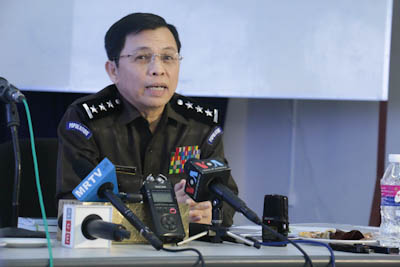A group of Myanmar media witnessed the final stages of the scanning process of the more than 11 million collected census questionnaires on 01 October 2014 at the Census Office, in Nay Pyi Taw, the nation’s capital, effectively paving the paving the way to the next phase of the data analyzing to begin. The Census Office is located within the Department of Population.
The objective of the media visit to the Census office was to highlight and explain directly to the media the various stages of the current census operations as the second phase commences, notably relating to scanning, character inspections and key corrections of all of the data. The visit was also an opportunity to clarify census related questions that are of key significance to the media following the launch of the provisional results at the end of August, 2104.
The second part of the census analyzing stage which involves character inspection and key corrections phase, will pinpoint the exact number of inhabitants living in Myanmar. The main results are expected to be released in May 2015. The provisionary results released in August 2014 showed the preliminary population of Myanmar to be 51.4 million as compared to a projection, of 60 million. The lower number could be attributed to many factors such as families being smaller today than they were at the time of the last census in 1983, as well as people migrating to other countries.

“As the scanning process draws to an end, the next phase of the census coding, data editing and analyzing process beings. This will take approximately two months and is followed by the editing to remove obvious inconsistencies from the dataset. The next stage involves the preparation of the main census report. There will also be an evaluation of the data to increase user confidence. These three stages of the census process are connected with the release of the main results due in May 2015,”said Fredrick Okwayo, UNFPA’s Chief Technical Advisor.
U Myint Kyaing, Director General of the Department of Population, Dr. Nyi Nyi and Daw Khaing Khaing Soe, both Directors of Population provided a detailed technical overview of the next phases of the census data processing activities. These included the scanning process, the equipment being used, the storing of the scanned questionnaires, the amount of persons working inside the Census Office, key corrections as well as the coding of ethnicity, occupation and industry, and the various phases of the release of data results.

U Myint Kyaing stressed that the main results to be released in May 2015 would not include data on ethnicity, occupation and industry which requires further manual coding before being analysed and published, as this is a time consuming exercise. On the issue of ethnicity further consultations between the government and different ethnic groups are needed prior to release of data. These results are expected to be released in late 2015 or in early 2016. He also went into details explaining how the census operation differs from the general election which is scheduled for the end of 2015.

After the briefing the group toured the Census Office to get a first-hand impression of the mammoth census operation and the various stages from storing of the enumeration forms and maps to the actual scanning and data capturing process. For the scanning process eight state of the art scanners are being used to expedite the process of data capture. Around 150,000 questionnaires are being scanned a day.
Census data will be used to formulate development policies and projects to improve access to services, such as health and education, for the people of Myanmar. Myanmar’s first census in over three decades took place from 29th March to 10 April, 2014.
The census process is being implemented by the Department of Population in the Ministry of Immigration and Population, with technical and financial support from UNFPA.


